Are African wild dogs wolves or dogs?
African wild dogs are neither wolves nor dogs, despite their common English names, and the fact that their scientific name, Lycaeon pictus, translates to 'painted wolf'.
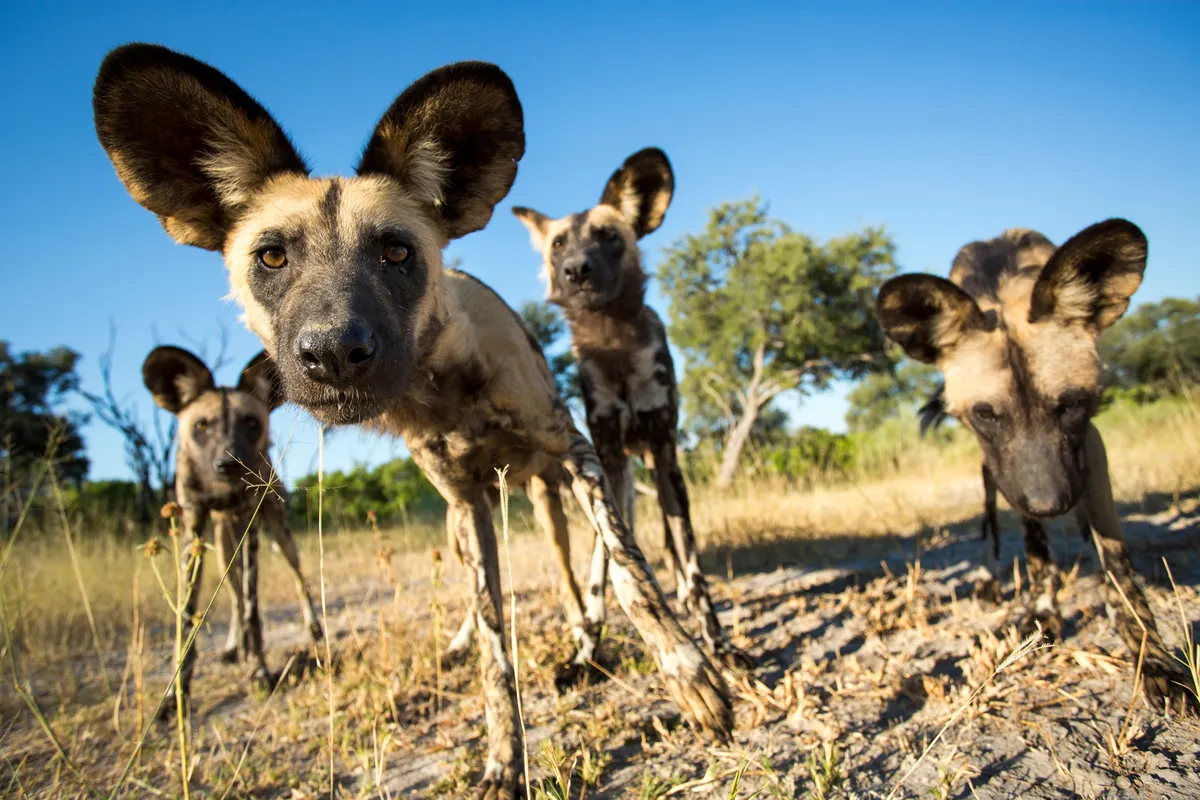
Like wolves and dogs, African wild dogs do belong to the Canidae family. However, grey wolves, coyotes, dogs and jackals are all in the Canis genus, whereas African wild dogs are the only extant (living) species in the Lycaeon genus.
- What is the biggest wolf in the world? Meet the deadly canine apex predator - as well as its domestic rivals
- Coyote vs wolf: what's the difference between these two beautiful and charismatic canids that thrive in North America?
Previous studies have grouped wild dogs with dholes and bush dogs. However, research has shown that morphological similarities among these species are no longer considered to show common ancestry between the species.
African wild dogs are now considered close to the base of the wolf-like canids.
Why are African hunting dogs known by so many different names?
African wild dogs are known by a number of common English names including African hunting dogs, Cape hunting dogs, painted dogs, and painted wolfs.
Though African wild dog is the most widely used name, the BBC's Dynasties series referred to them as painted wolves and after its release, some organisations have changed how they refer to species.
How big are African wild dogs?
The average size of an African wild dog is roughly between 75cm – 110cm. When compared to members of the Canis genus, the African wild dog is comparatively lean and tall, with outsized ears and lacking dewclaws. Unlike other dogs, wild dogs have four toes instead of five.
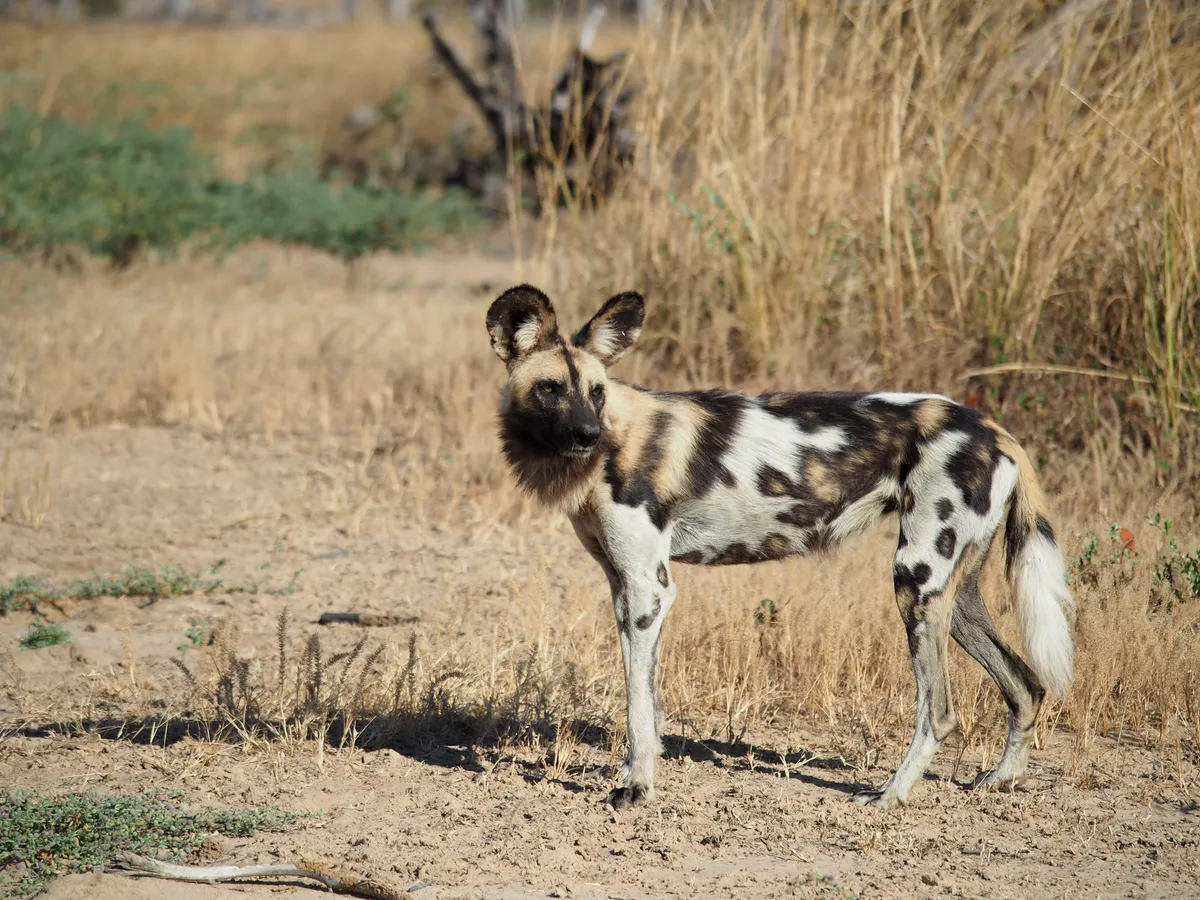
How long do African wild dogs live for?
On average, African wild dogs live for 7 years. In captivity, they can live up to 13 years.
Where do African wild dogs live?
African wild dogs are found in a number of sub-Saharan Africa, including Botswana, Kenya, Mozambique, Namibia, South Africa, Tanzania, Zambia, and Zimbabwe.
Please note that external videos may contain ads.
Are African wild dogs Endangered?
African wild dogs are listed as Endangered on the IUCN Red List (last assessed in 2012), due to a range of factors including habitat loss, human-wildlife conflict, being caught in snares as bycatch by poachers hunting for meat, and infectious diseases like canine distemper and rabies.
African wild dogs used to range across 39 countries, with population numbers in the hundreds of thousands. Currently, there are fewer 6,000 individuals are left in the wild, forming fewer than 700 packs.
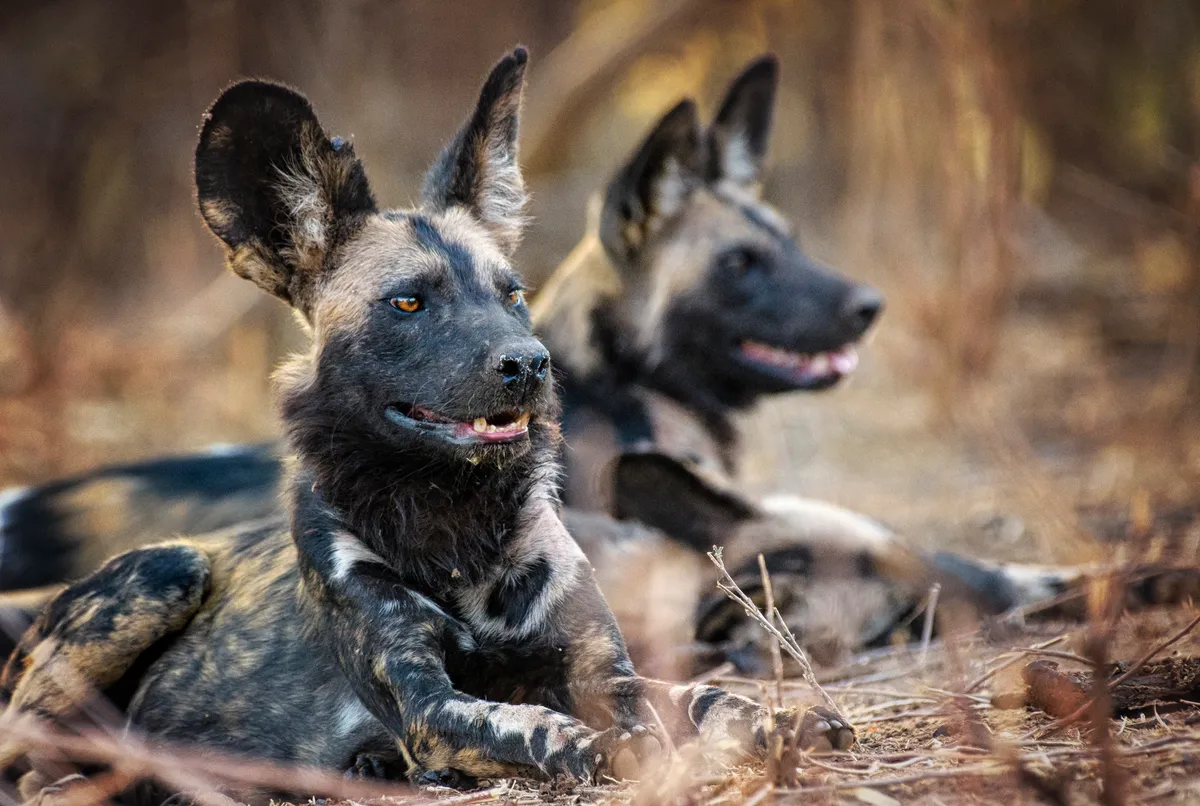
How fast can African wild dogs run?
With its streamline body and sturdy long legs, during chases the wild dogs can reach top speeds up to 60 – 72.5km/h and are specially adapted to dealing with heat stress with their trademark large circular ears that help keep the air out.
African wild dogs are team players and work effectively in packs, once they’ve captured its prey on the first grab, the other pack member may assist to complete the kill and drag the prey animal to the ground.

What do African wild dogs eat?
As a carnivorous pack predator, African wild dogs hunt in packs and will eat most mammals, including small rodents and larger mammals such as antelope.
How do African wild dogs hunt? By Dr Daniella Rabaiotti
African wild dogs are usually thought of as cooperative pack hunters that chase large prey for long distances across the open plains, tiring out their quarry before going in for the kill. But their hunting behaviour is in fact much more varied than that.
Please note that external videos may contain ads.
Research in Botswana and Kenya has revealed that in woodland savannah habitats wild dogs often target considerably smaller animals, such as dik-dik and hares. To catch them, pack members are more likely to pair off or even hunt alone, flushing their prey from the undergrowth before chasing it down. Hunts of this type often result in multiple kills – after all, one dik-dik doesn’t go far among lots of hungry dogs.
Wild dogs despatch their prey by tearing it apart, as opposed to the suffocation strategy used by big cats. This has earned them something of a bad reputation, but kills are usually quick and efficient. Meals are consumed as fast as possible to avoid them being stolen by hyenas.
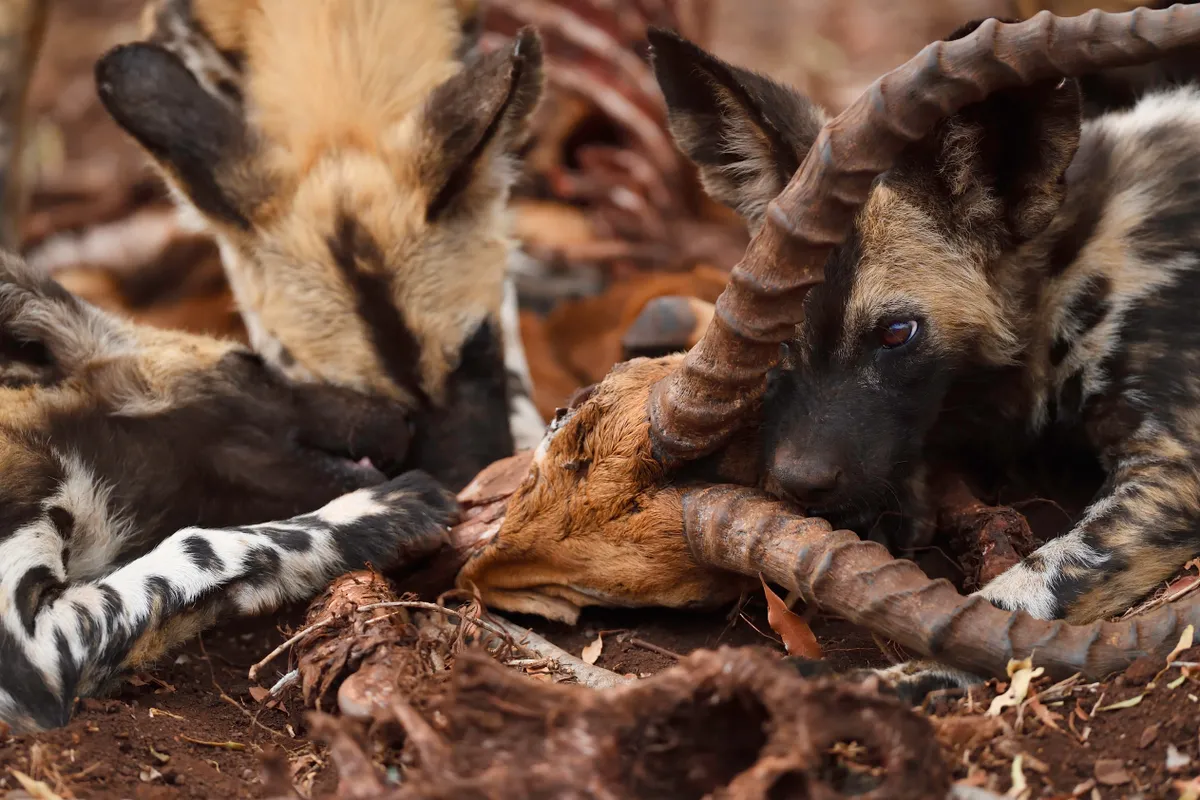
How many African wild dogs live in a group and are they all related?
A pack of African wild dogs consist of a group of wild dogs with by a productive pair (alpha male and alpha female). This pair are the only individuals responsible for reproducing and re-establishing the next generation of wild dogs within the pack. Litters typically consist of between 4 and 12 pups.
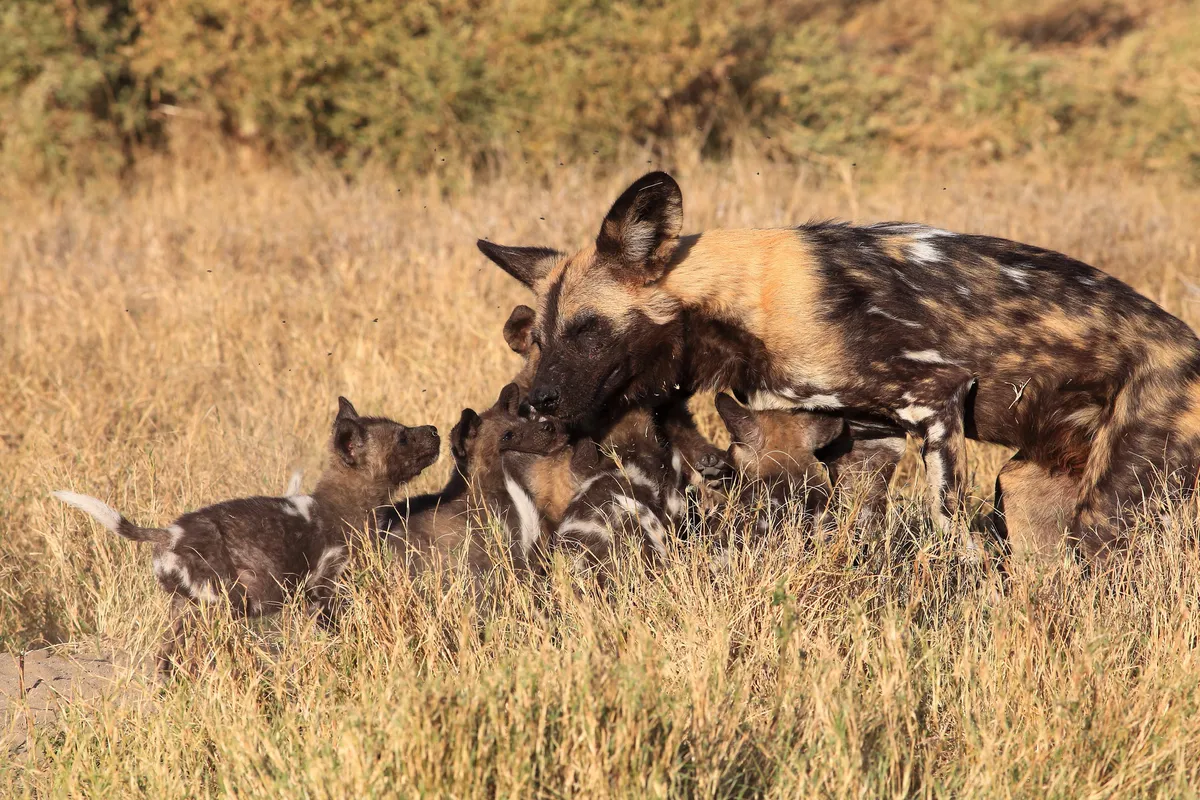
Occasionally non-alpha females will have pups. This can result in female having to raise the pups alone, but sometimes packs will raise both litters.
Pack sizes can be as small as 3 members branching out to as many as 20 individuals, but this all depends on the environment the wild dogs are living in i.e., food resources and risks of other predators.
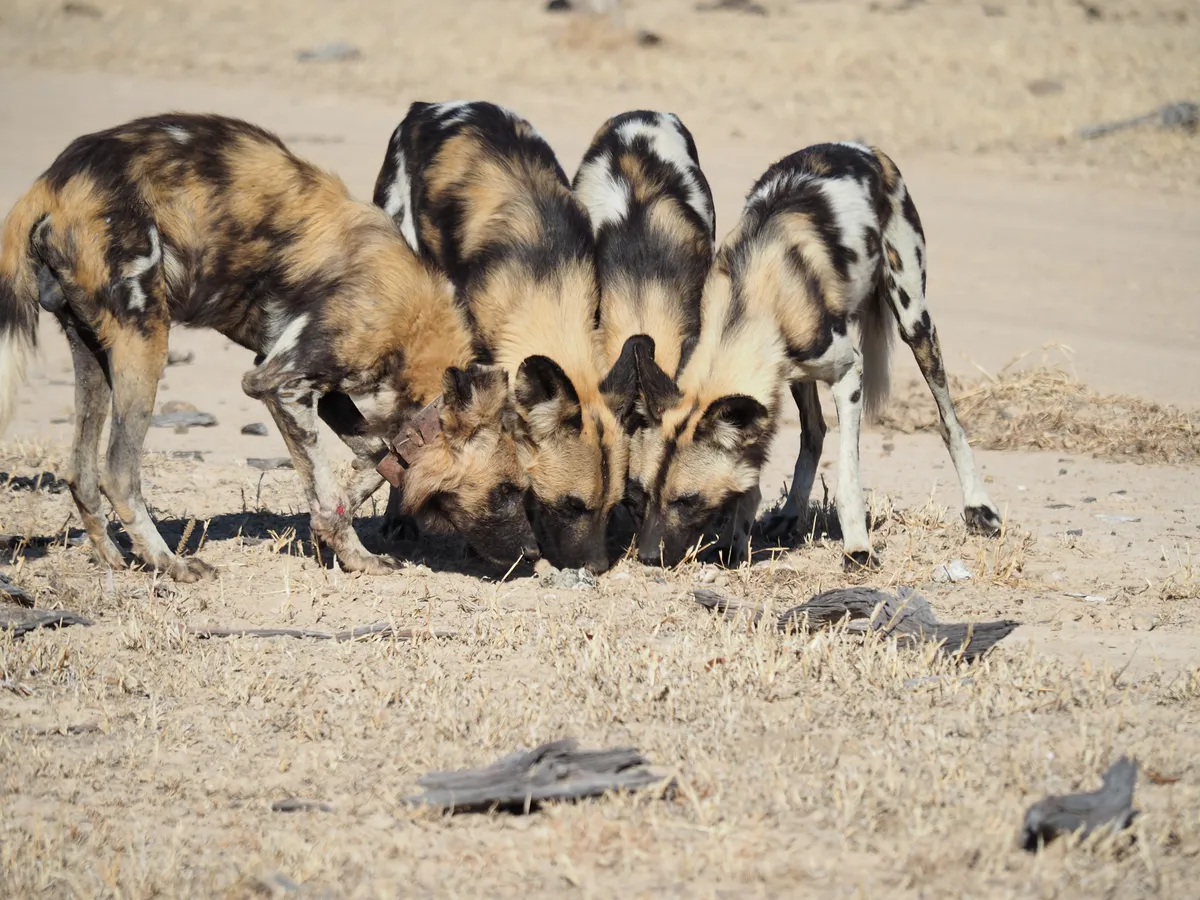
Dogs will regurgitate meat to feed other members of the pack including pups, injured individuals and pregnant females.
All the dogs within the pack contribute towards the care of the newly born pups, as the pups are vital for the future survival of the pack.
In 2019, wildlife guides in Botswana's Okavango Delta were surprised to find that adults from one pack travelled over 5km to steal pups from another pack.
Please note that external videos may contain ads.
Are African hunting dogs affected by climate change?
Research from ZSL’s Institute of Zoology illustrates that wild dog breeding pairs raise fewer pups at ever increasing climatic temperatures. African wild dogs have evolved to be a diurnal species, meaning that the species are most active during the daytime.
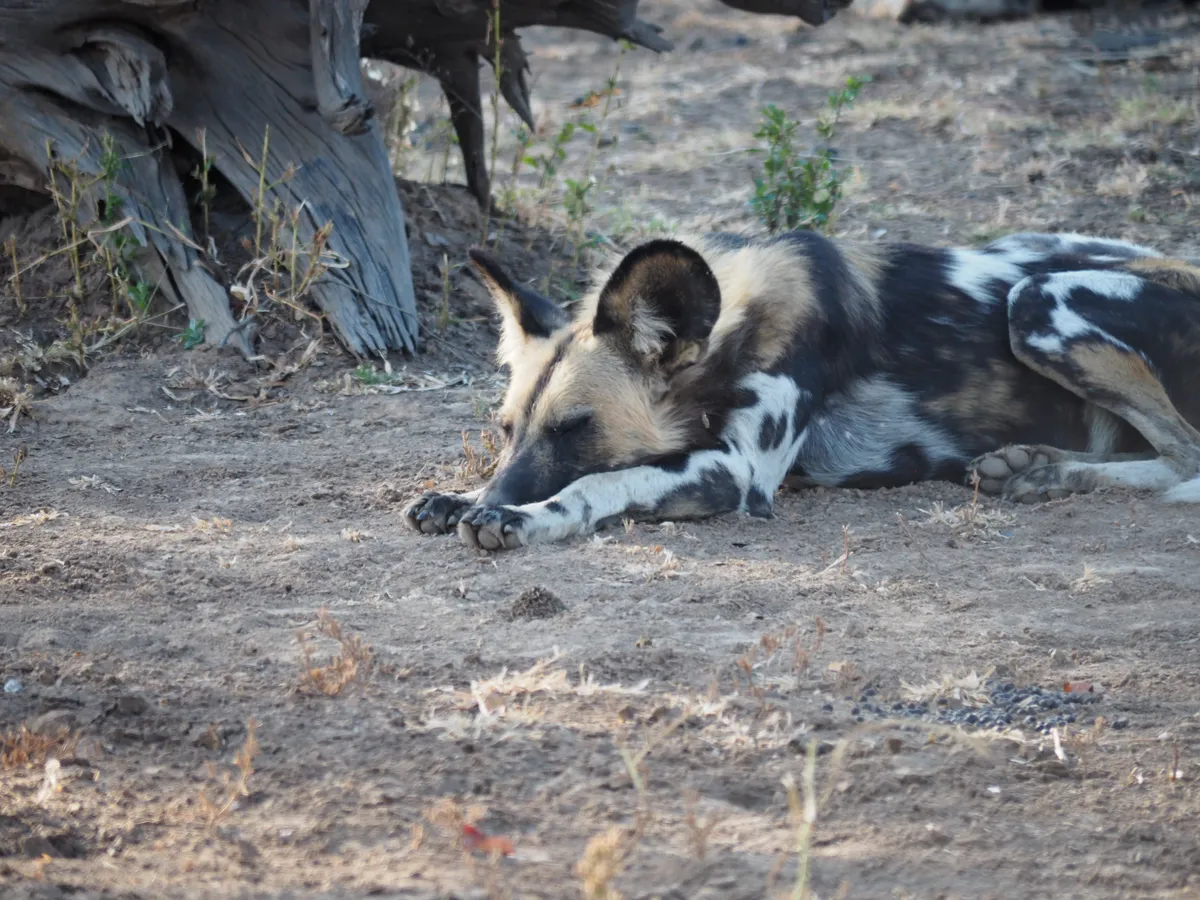
What is being done to save African wild dogs?
Fortunately, there is much hope as there are a load of organisations comprising of many passionate individuals striving to give the species a promising future.
These organisations include:
- Wildlife ACT
- Painted Dog Conservation
- The Painted Wolf Foundation
- Botswana Predator Conservation Trust
- Endangered Wildlife Trust (EWT)
- World Wildlife Fund (WWF)
- Wildlands
- Wildlife Conservation Network
- Ezemvelo KZN Wildlife
- IUCN Canids Specialist Group
- Range Wide Conservation Program for Cheetah & African Wild Dogs
- African Wildlife Foundation
What will happen if African wild dogs goes extinct?
Among other large African carnivores such as lions, hyenas, cheetahs and leopards, the species plays a vital role in the ecosystem by controlling ungulate species from causing habitat destruction and overfeeding.
These ungulate species include medium-sized antelopes such as impala, greater kudu, Thomson’s gazelle, nyala and common wildebeest. African wild dogs are generalist predators, specialising in a range of habitats including short-grass plains, semi-desert, bushy savannas and upland forest areas.
Main image: African wild dog in South Luangwa National Park, Zambia. Megan Shersby
